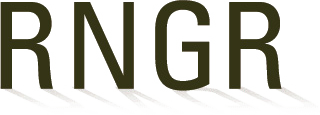
Asclepias (humistrata)
|
Gabriel Campbell-Martinez Graduate Research Assisstant University of Florida Milton, Florida 32124 7274521333 camp5595@ufl.edu |
| Family Scientific Name: | Apocynaceae | ||
|---|---|---|---|
| Family Common Name: | Dogbane family | ||
| Scientific Name: | Asclepias humistrata Walter | ||
| Common Name: | sandhill milkeed | ||
| General Distribution: | Southeast USA on secondary beach dunes, sandhills, and dry disturbed sites. | ||
| Known Invasiveness: | Not known to be invasive | ||
| Propagation Goal: | Plants | ||
| Propagation Method: | Seed | ||
| ProductType: | Propagules (seeds, cutings, poles, etc.) | ||
| Time To Grow: | 28 days | ||
| Target Specifications: | How to germinate this plant. | ||
| Propagule Collection: | Collect seeds when follicle is dehisced or dehisces upon the slight application of pressure. | ||
| Propagule Processing: | Seeds were removed from follicle by hand. | ||
| Pre-Planting Treatments: | Plants have been seeded 48 hours after collection with over 80% germination and therefore do not need any pretreatments. | ||
| Establishment Phase: | Seeds germinate (at least 70% germination of viable seed) in constant or fluctuating temperatures, in light (12 hr photoperiod) or dark, with optimal temperatures between 24-28 degrees Celsius. | ||
| Harvesting, Storage and Shipping: | Once dried, seeds can be stored in airtight containers at room temperature for at least 15 months and retain high viability. | ||
| Length of Storage: | 15 months or more | ||
| References: | Campbell GE. 2016. Dormancy and germination characteristics of 2 Florida native forbs, Asclepias humistrata and Lupinus diffuses. University of Florida. Master’s Thesis. | ||
Citation:
Campbell-Martínez, Gabriel Eduardo. 2017. Propagation protocol for production of Propagules (seeds, cutings, poles, etc.) Asclepias humistrata Walter Plants University of Florida Milton, Florida. In: Native Plant Network. URL: https://NativePlantNetwork.org (accessed 2025/11/03). US Department of Agriculture, Forest Service, National Center for Reforestation, Nurseries, and Genetic Resources.



